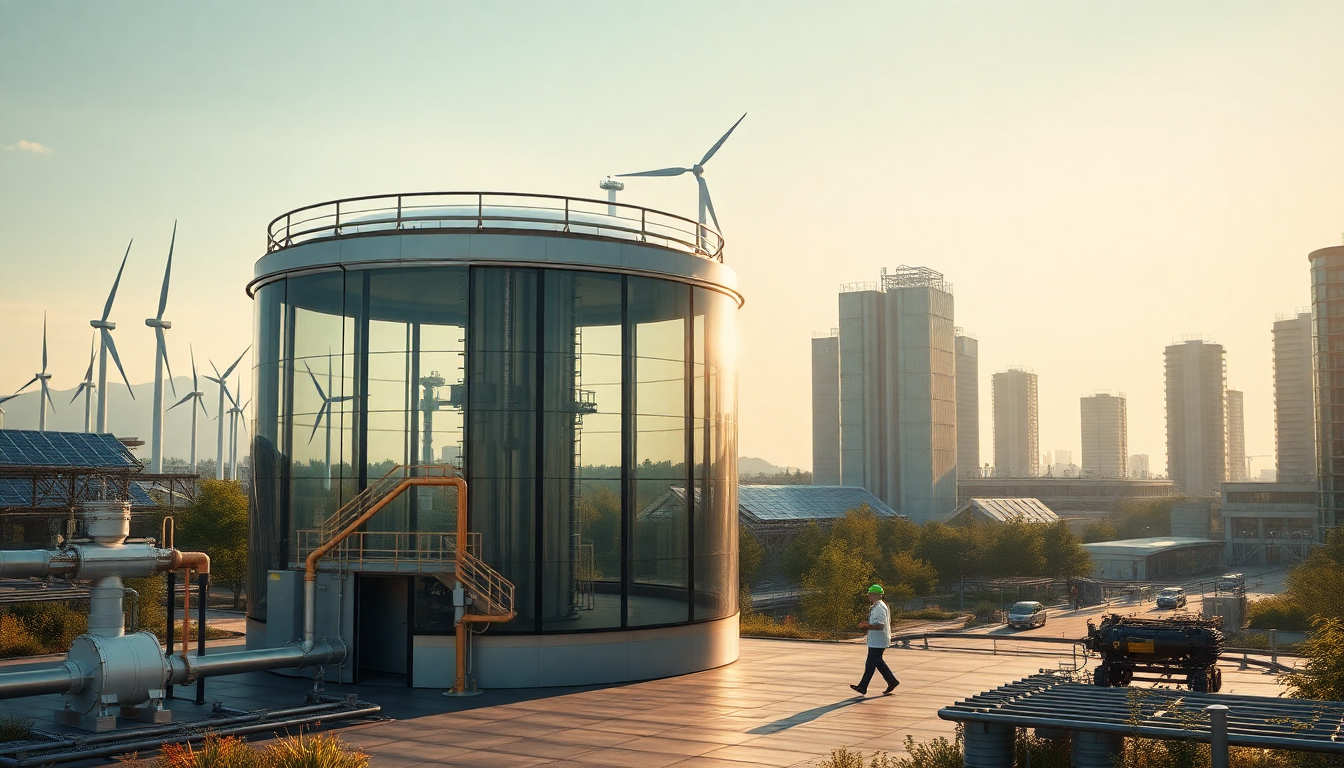Table of Contents
As the world increasingly focuses on sustainable energy solutions, the recent collaboration between Google and the Italian firm Energy Dome is turning heads in the energy storage game. What’s the big deal? This partnership is set to harness carbon dioxide in a groundbreaking way, paving the path for long-duration energy storage that could revolutionize how we tap into renewable power sources like wind and solar. By leveraging this innovative CO2 battery technology, Google isn’t just boosting its renewable energy projects; it’s also taking a significant step towards creating more reliable power supply systems around the globe.
Understanding the CO2 Battery Technology
Energy Dome’s CO2 battery is a game changer in energy storage, moving away from traditional lithium-ion systems that often rely on rare materials and complicated manufacturing. So, how does it work? This technology uses readily available mechanical components and basic physical principles to store energy. The process kicks off by capturing excess energy generated during peak production times from renewable sources. This energy is then used to compress carbon dioxide gas into a liquid state.
When energy demand rises, that stored liquid CO2 is heated, which causes it to expand back into gas. This expansion drives a turbine, generating electricity just like steam would. After delivering energy back to the grid, the gas is cooled and captured again for future use, creating a closed-loop system that ensures efficiency and sustainability. What’s impressive is that the CO2 battery can provide dispatchable energy for up to 24 hours, far outpacing conventional battery systems that usually offer only a few hours of backup.
The Impact of Google’s Investment
Google’s investment in Energy Dome has the potential to turbocharge the rollout of this cutting-edge technology across its renewable energy projects worldwide. By improving the reliability of wind and solar power, the CO2 battery tackles a major challenge in the renewable energy sector: intermittency. With global demand for stable energy sources on the rise, being able to store and effectively dispatch energy is becoming essential. In this context, Energy Dome’s solution provides a strong answer, enabling energy storage during high production times and releasing it when production dips.
Plus, the inclusion of spinning machinery within the CO2 battery adds another layer of stability to the grid, which is crucial as traditional fossil fuel plants are phased out. This feature supports a smoother transition to a more sustainable energy landscape, ensuring that communities can enjoy a more reliable power supply.
Broader Implications for Clean Energy
The impact of this technology goes beyond just Google’s operations. As Energy Dome’s CO2 battery technology scales up, it has the potential to enhance energy security and affordability for communities across the globe. Imagine having a dependable source of electricity, even when solar panels and wind turbines aren’t generating power—that’s what this innovation promises, boosting resilience in the energy grid.
Another significant benefit of this technology is reducing our reliance on fossil fuel power plants. As we pivot toward cleaner energy solutions, efficient storage mechanisms like the CO2 battery will play a vital role in lowering emissions and fostering a sustainable future. With commercial deployments planned in regions like North America, Europe, and Asia-Pacific, the potential for widespread adoption is enormous.
In conclusion, Google’s partnership with Energy Dome marks a pivotal moment in the quest for reliable clean energy. By emphasizing long-duration energy storage and finding innovative uses for carbon dioxide, this collaboration not only tackles current energy challenges but also lays the groundwork for a more sustainable and resilient energy future. Are we ready to embrace this change?


